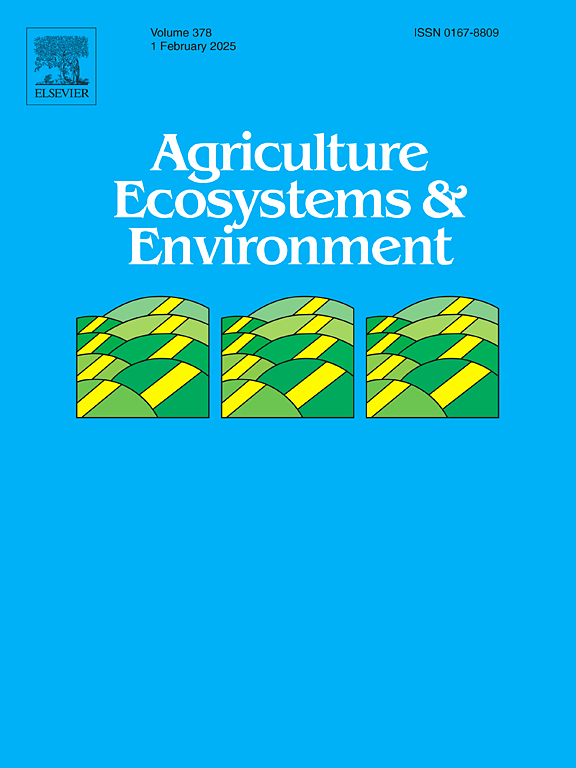Accounting for the biodiversity benefits of woody plantings in agricultural landscapes: A global meta-analysis
IF 6
1区 农林科学
Q1 AGRICULTURE, MULTIDISCIPLINARY
引用次数: 0
Abstract
Woody plantings are widely promoted to ameliorate biodiversity loss in agricultural landscapes. New market mechanisms are rapidly emerging to expedite such efforts, but limited tools and data to account for benefits achieved hamper their implementation. Using data from 204 primary studies and 1206 paired comparisons, we present a global meta-analysis of the biodiversity benefits of woody plantings in agricultural landscapes, in a biodiversity and ecosystem accounting framework. Consistent with emerging biodiversity and ecosystem accounting methods, we express results as agricultural field:natural reference and planting:natural reference ratios to estimate the biodiversity values of agricultural fields and plantings, respectively. Mean biodiversity abundance and species richness for agricultural fields were 0.40 of those for natural reference sites, compared with 0.62 for plantings averaging 20 years old, indicating a mean biodiversity benefit of 0.22. These values varied significantly among taxonomic groups, with unexpectedly high values for agricultural fields driven by high means for invertebrates. Variation among studies was substantial, and biodiversity values for plantings increased with higher diversity and native dominance of plantings and lower management intensity. Critically, estimates of biodiversity benefits based on abundance versus richness were comparable, but estimates using compositional measures typically implied substantially lower benefits, likely owing to effects of species identity. Our study operationalises approaches for quantifying the benefit of plantings for biodiversity and ecosystem accounting, and emphasises the need to use compositional measures for realistic estimates of biodiversity benefits.
求助全文
约1分钟内获得全文
求助全文
来源期刊

Agriculture, Ecosystems & Environment
环境科学-环境科学
CiteScore
11.70
自引率
9.10%
发文量
392
审稿时长
26 days
期刊介绍:
Agriculture, Ecosystems and Environment publishes scientific articles dealing with the interface between agroecosystems and the natural environment, specifically how agriculture influences the environment and how changes in that environment impact agroecosystems. Preference is given to papers from experimental and observational research at the field, system or landscape level, from studies that enhance our understanding of processes using data-based biophysical modelling, and papers that bridge scientific disciplines and integrate knowledge. All papers should be placed in an international or wide comparative context.
 求助内容:
求助内容: 应助结果提醒方式:
应助结果提醒方式:


